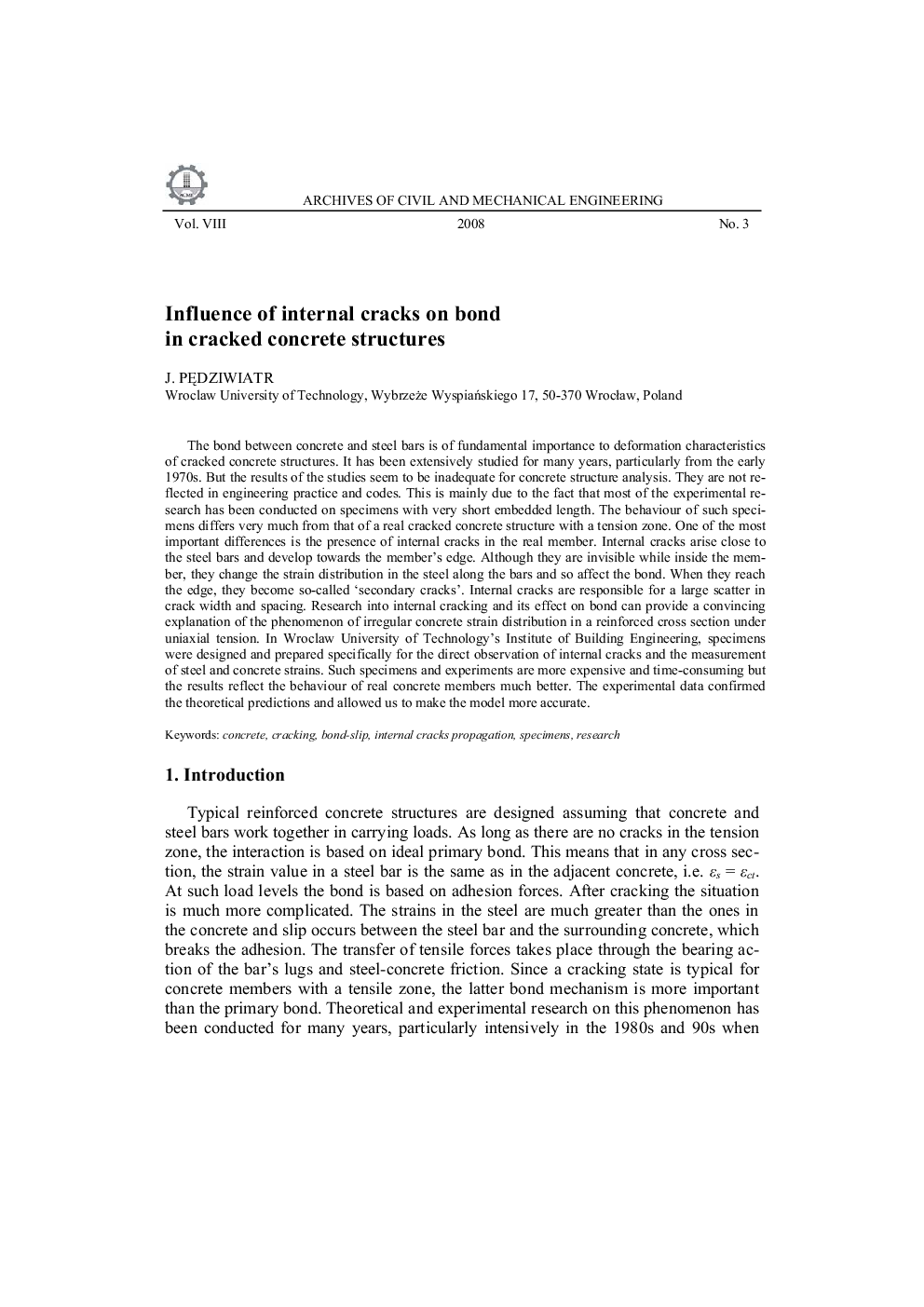| Article ID | Journal | Published Year | Pages | File Type |
|---|---|---|---|---|
| 246122 | Archives of Civil and Mechanical Engineering | 2008 | 15 Pages |
The bond between concrete and steel bars is of fundamental importance to deformation characteristics of cracked concrete structures. It has been extensively studied for many years, particularly from the early 1970s. But the results of the studies seem to be inadequate for concrete structure analysis. They are not reflected in engineering practice and codes. This is mainly due to the fact that most of the experimental research has been conducted on specimens with very short embedded length. The behaviour of such specimens differs very much from that of a real cracked concrete structure with a tension zone. One of the most important differences is the presence of internal cracks in the real member. Internal cracks arise close to the steel bars and develop towards the member's edge. Although they are invisible while inside the member, they change the strain distribution in the steel along the bars and so affect the bond. When they reach the edge, they become so-called ‘secondary cracks’. Internal cracks are responsible for a large scatter in crack width and spacing. Research into internal cracking and its effect on bond can provide a convincing explanation of the phenomenon of irregular concrete strain distribution in a reinforced cross section under uniaxial tension. In Wroclaw University of Technology's Institute of Building Engineering, specimens were designed and prepared specifically for the direct observation of internal cracks and the measurement of steel and concrete strains. Such specimens and experiments are more expensive and time-consuming but the results reflect the behaviour of real concrete members much better. The experimental data confirmed the theoretical predictions and allowed us to make the model more accurate.
